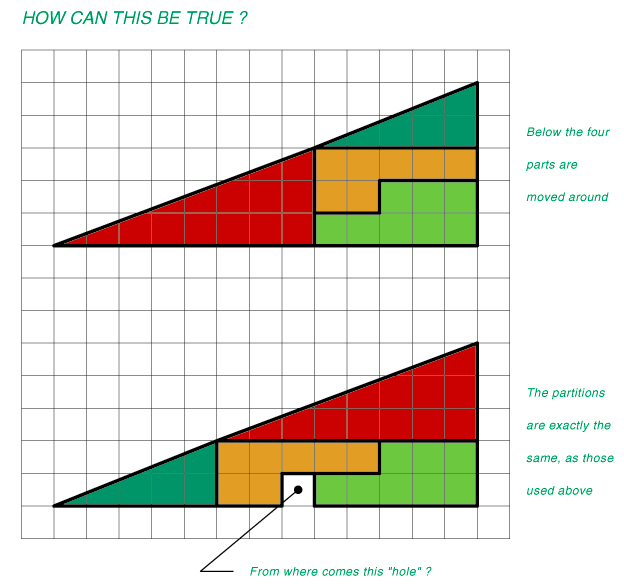|
|
|
Where is the last dollar?
The answer to Question 1 does not depend upon the workability of any "Star Wars" device. And answering "It won't work" is not sufficient, because the problem already tells you that.
The answer to Question 2 does not depend upon what a "few seconds" means
Now for the problems:
Index: Set 6 | Set 5 | Set 4 | Set 3 | Set 2 | Set 1
In other words, 0 = infinity. Explain what has gone wrong.
Ok, assuming that the prisoners are allowed to collude and strategize before they are given their hats (they know of the pending situation before it takes place, but cannot communicate at all once the hats are given out), what should they do to maximize their probability of their own survival? What should they do to maximize the number of surviving prisoners (is this the same question)? And assuming there is a difference in the two strategies, what if some of the prisoners (with probability p) decides to be selfish and go with a selfish strategy instead of strategy which maximizes the number of survivors?

limx->inf f(x)/g(x) -> 0
Does there exist a function h, such that:
limx->inf f(x)/h(x) -> 0 and limx->inf h(x)/g(x) -> 0 ?
If so, construct the function h(x).

If you are unfammilliar with the language used above: Place 10 points on plane, then draw unidirectional arrows connecting point pairs together (the arrows can overlap) such that each point has no more than 2 arrows coming out of it, and you can follow the arrows between the points such that at most 3 arrows need to be traversed to get between any pair of points.
If you wish, you may submit solutions to me via email.
 William Wu's riddles
William Wu's riddles Nick's Mathematical Puzzles
Nick's Mathematical Puzzles Mathematical Mayhem (Two of the problems from set #2 were taken from here.)
Mathematical Mayhem (Two of the problems from set #2 were taken from here.) Theseus and the Minotaur
Theseus and the Minotaur
 Eric Weisstein's world of Mathematics
Eric Weisstein's world of Mathematics Chris Long's Think and Derive Page
Chris Long's Think and Derive Page
 Discover Games -- brain teasers
Discover Games -- brain teasers
 Search for puzzles on Google
Search for puzzles on Google
 Popcap -- Mind bending online game
Popcap -- Mind bending online game
 TEST YOUR I.Q.
TEST YOUR I.Q.
 Stephen Magill Math Puzzles
Stephen Magill Math Puzzles
 Purdue University's Problem of the Week
Purdue University's Problem of the Week
|